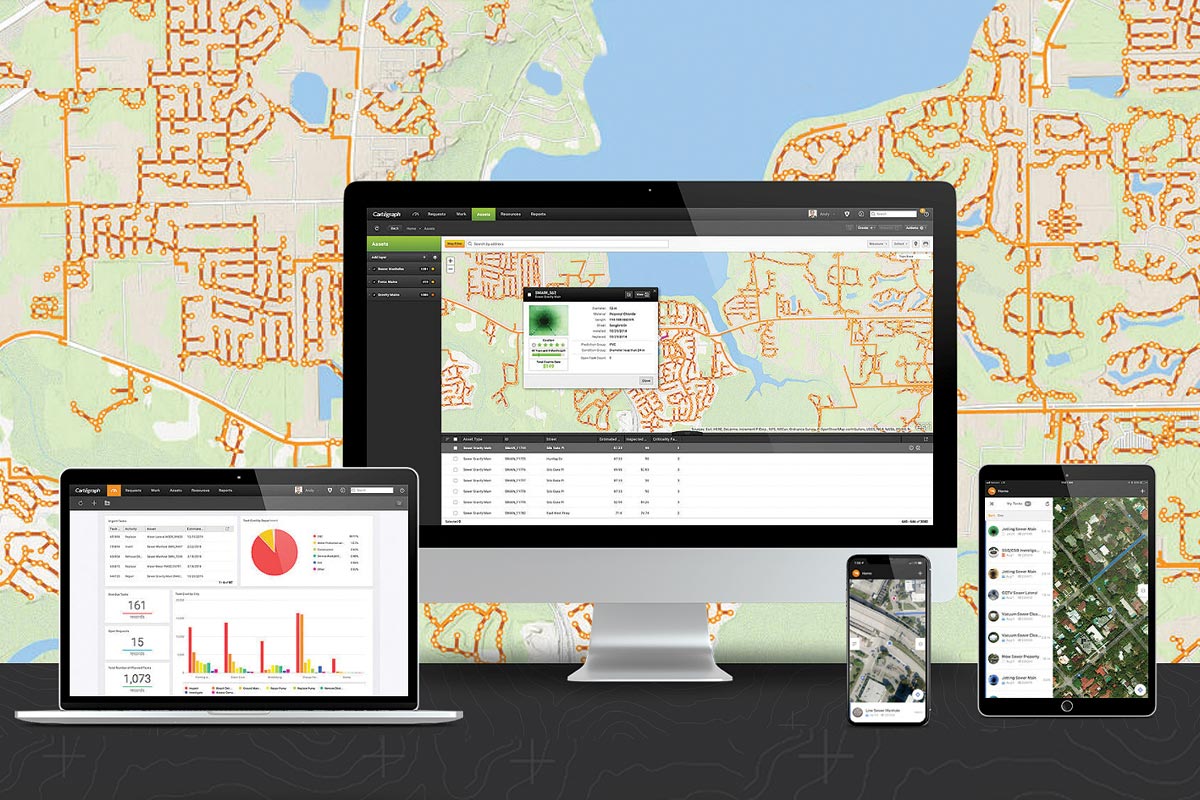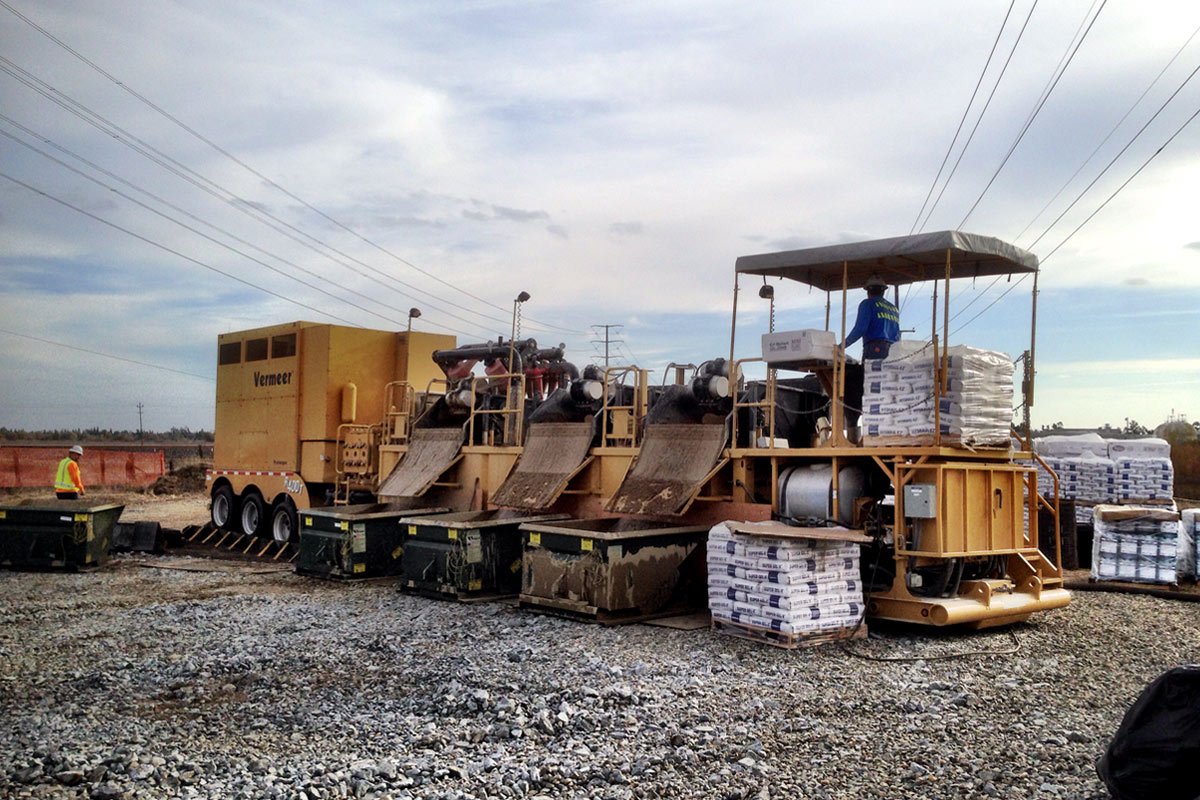
2019 Project of the Year Rehabilitation Winner: Joint Outfall “B” Unit 1A Phase 1
After serving the Sanitation Districts of Los Angeles County (SDLAC) faithfully for more than 60 years, the 144-in. (3,658 mm) Joint Outfall “B” Unit 1A sewer had seen better days. The SDLAC knew it had to perform a major structural rehabilitation on the reinforced concrete pipe (RCP).
The ability to divert and bypass flows meant the District could look at several rehab methods, but cured-in-place pipe (CIPP), spiral-wound liners, PVC and HDPE liners were ruled out due to size, structural properties, cost and speed of installation. Sliplining using fiberglass reinforced pipe proved to be the best option, and the District moved ahead working with Spiniello Companies. Spiniello Companies selected Hobas Pipe USA to take on what, Hobas Pipe USA says, is the largest diameter segmental sliplining project on the West Coast of the United States.
It is the size and complexity of the project that earned the Joint Outfall “B” Unit 1A Phase 1 project the 2019 Trenchless Technology Project of the Year for Rehabilitation.
Joint Outfall “B”
At the time of construction in 1955, Joint Outfall “B” used the largest RCP pipe available for the time. The 15,000-ft sewer runs beneath the streets of Carson, California, to the Joint Water Pollution Control Plant (JWPCP). The JWPCP is one of the largest wastewater treatment plants in the world and is the largest of the SDLAC’s wastewater treatment plants. The facility provides both primary and secondary treatment for approximately 260 million gallons of wastewater per day (980,000 m³/day) and serves a population of approximately 3.5 million people throughout Los Angeles County.
By the late 1980s, moderate corrosion was observed in the Joint Outfall “B.” In 1993, the SDLAC completed construction a new box sewer that runs parallel to Joint Outfall “B,” allowing it to be removed from service. The foreword-thinking SDLAC leadership did continue to operate the Joint Outfall “B” on a limited basis in order to rehabilitate another major sewer feeding the JWPCP and to accommodate increased flow during the wet weather events.
According to Anthony Howard, division engineer, SDLAC Sewer Design, this strategy limited additional corrosion of the sewer, which allowed SDLAC to defer rehabilitation to a later time.
In the ensuing years, “We found over time, that putting this sewer into service during the wet weather season alleviated hydraulic overload conditions is sewers upstream of Joint Outfall “B” Unit 1A,” Howard says. “In line with SDLAC’s approach to eliminate all sanitary sewer overflows, the decision was made to rehabilitate Joint Outfall “B” now and operate the sewer continuously.”
Phase 1 involved the rehabilitation of about 5,000 ft (1,524 m) and tackled the two most deteriorated sections of the system. Reach 1 is approximately 1,000 ft (305 m), and included curves along the alignment and ran into the JWPCP. Reach 2 is approximately 4,000 ft (1,219 m) and is parallel to Wilmington Avenue – a truck route – and adjacent to an industrial sector of the city.

As mentioned above, other rehab methods were discussed early on, but SDLAC found none of them viable for the project’s size and allotted dry weather season work window. Initially, Howard notes, there was some discussion on using a larger liner, but they ultimately determined that the 126-in. ID pipe would work well for the project. “We’ve done about 50 miles of sliplining but we typically limit the pushing of pipe through curves. The smaller liner size minimized the risk of the liner becoming stuck during installation.” Howard says.
“The general idea of sliplining or relining curved alignments has recently been revised to show that it can be done. Supersized fiberglass reinforced polymer mortar (FRPM) pipes are now commonplace in the civil engineering for infrastructure builds or repairs,” says Bijan Khamanian, division manager, Western U.S. and Canada, Hobas Pipe USA. “The corrosion resistance and availability of FRPM is making infrastructure repairs a true long-term solution, savings tens and ultimately hundreds of millions of dollars. At a minimum, SDLAC will not be concerned with this system for at least 100 years.”
RELATED: Baltimore Bypass: Joint Efforts Lead to Successful Bypass of Large Interceptor
Contractor Selected
Winning bidder on the project was Spiniello Companies, whose Western Region office is in Pomona, California. From the outset, the contractor was confident it could complete the task at hand and did so, ahead of schedule.
“We had similar projects with a different owner and have had several runs at it before being awarded the project with the district. We knew what we were getting into and had a proven way to complete the project,” says Abdou Seydi, vice president, operations, Spiniello Infrastructure West Inc. “The biggest challenge for us was the sheer size of the pipe, which was massive. A 144-in. host pipe, even though the liner pipe was smaller than the host…at that size, the pipe weighed quite a bit. It was difficult to maneuver it, place it and stab the joints.”
Because the work took place in the dry season and the line was out of service, crews were able to divert the minimal flow in the line, clean the sewer and slipline using man-entry methods. Maneuvering the 20-ft sections of pipe below ground required a custom-built pipe carrier. With a worker steering the carrier, it was pushed into the pipe using a wheel loader and hydraulic jacks on the carrier would lift and hold the pipe in place. The section of pipe was then steered into place.
The curved sections employed the same method, only these sections of pipe were mitred and varied in length depending on where in the curves they were to be positioned. There were three curves on the alignment, two were larger 250-ft radius curves. The third, an approximately 120-ft long, 90-ft radius curve was the one that the District was most concerned about.
Project Challenges
“Because of the curve, we had to maneuver the pipe to match the existing curve. It was like putting together a puzzle,” Seydi says. “When the pipe is that heavy, you have very little flexibility. Once you stab a piece and you realize the geometry does not work it is difficult to unstab the piece, and try a different solution. Fortunately, everything went well and we didn’t have that scenario, but it was a concern.”
Once the reach was complete, the pipe was bulkheaded so grouting work could be done. Seydi says that this took careful planning because of the sheer amount of annular space between the new pipe and the host pipe. Grouting until the annular space was full would not work because of concerns that it would displace the pipe off its desired grade. Armed with that knowledge, the team devised a plan to grout in lifts that would not displace the pipe. Ultimately, it took three lifts of grout for each reach before the annular space was filled. The grout was batched on-site and in the 4,000-ft (1,219 m) run, grouting was broken into two sections of approximately 2,000 ft.

Spiniello Companies used a specially-built man-operated pipe carrier and a modified wheel loader to maneuver the pipe into place once it was in the access pit.

While that addressed the issues at the jobsite, there was an unexpected challenge, thanks to the weather. Yes, this project took place during the dry season in Los Angeles, but all of the Hobas Pipe USA manufacturing is located in Houston. And this work was ongoing during a considerably active 2018 hurricane season.
RELATED: Downsized Culvert Solves Urgent Problem, Increases Flow in Cleveland
“During the construction of Reach 2, Houston was hit by 500-year floods due to a direct hit by Hurricane Harvey. The production plant was shut down during the event,” says Khamanian. “The roadways to take delivery of raw materials, and to ship finished pipe, were not 100 percent for 10 days, so the project did get delayed. However, the contractor was able to take the pipe [when it arrived] and install it efficiently and ahead of the SDLAC deadline.”
The work began in March 2018 and was substantially complete in October 2018. SDLAC is looking to complete the remaining 10,000 ft (3,058 m) of Joint Outfall “B” Unit 1A in two more phases in the future.
Project Owner: Sanitation Districts of Los Angeles County (SDLAC)
Engineer: SDLAC Engineering Department
Contractor: Spiniello Companies
Manufacturer/Supplier: Hobas Pipe USA
Value of Trenchless Project: $9.2 million




